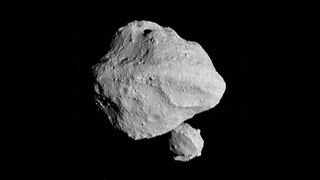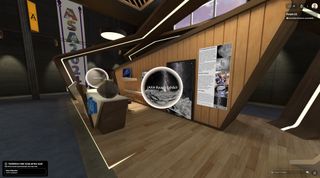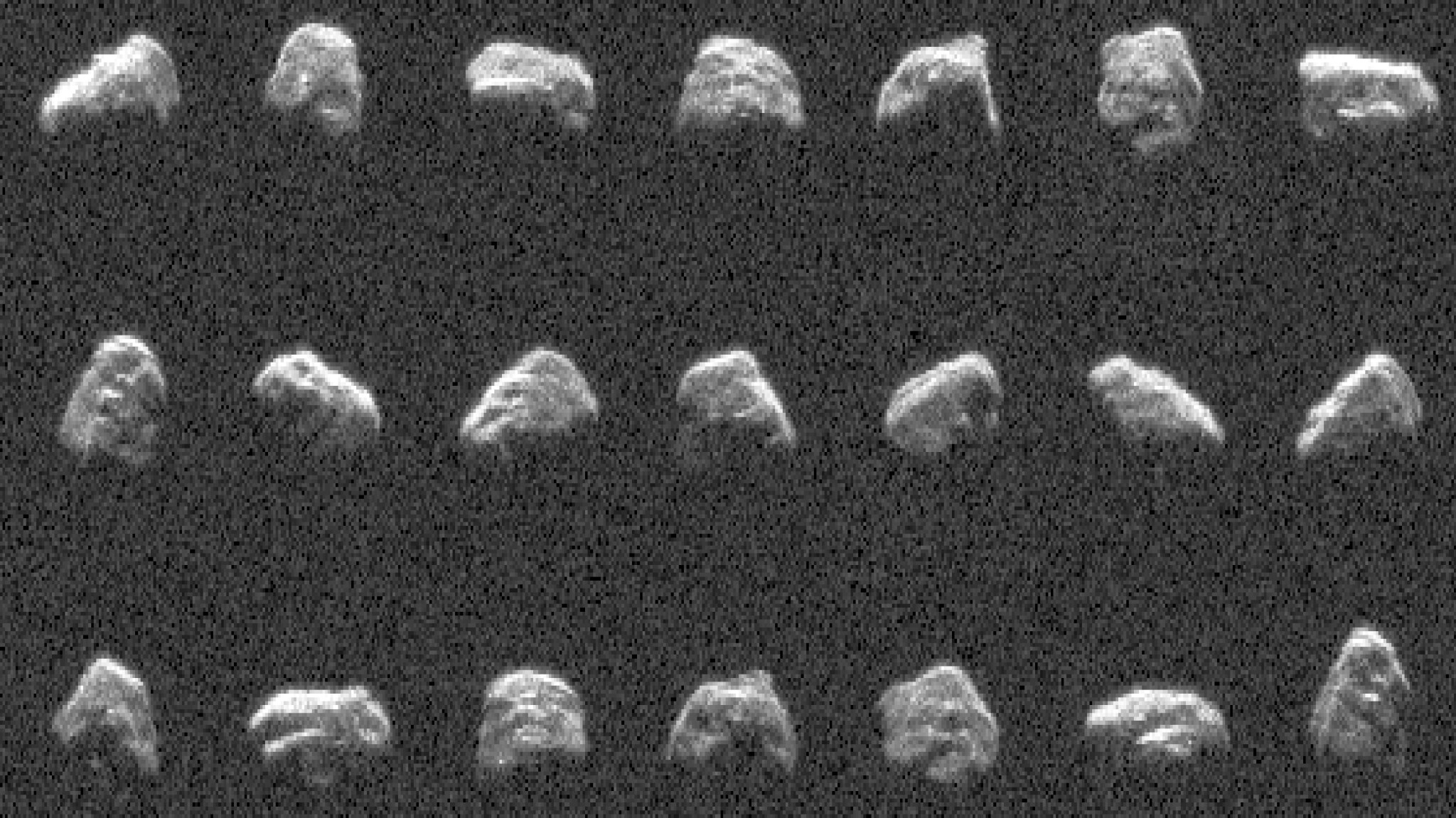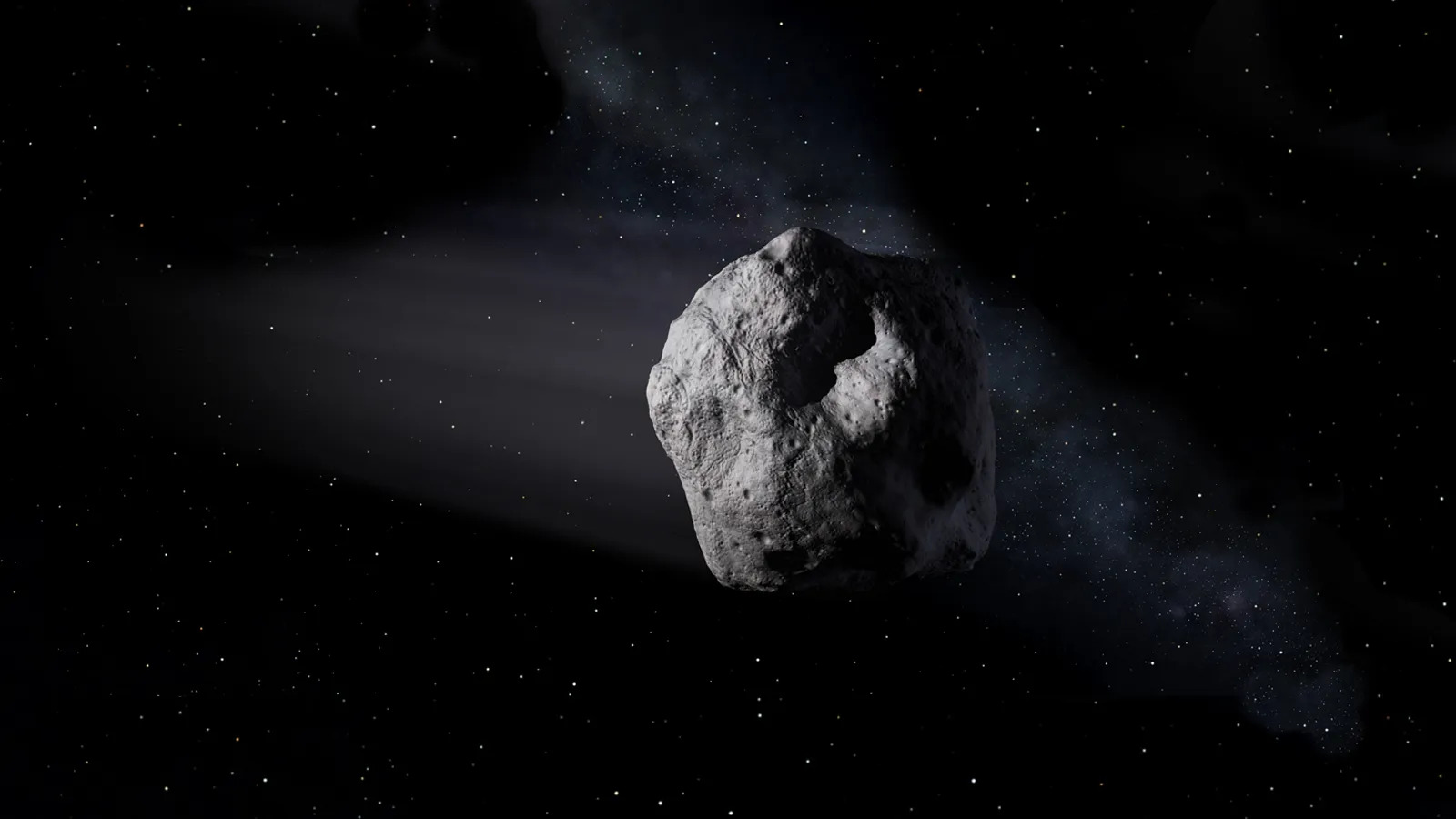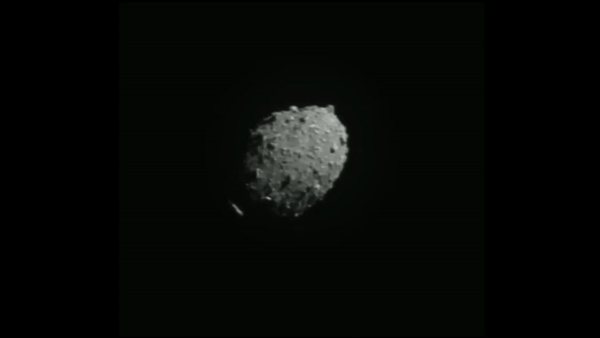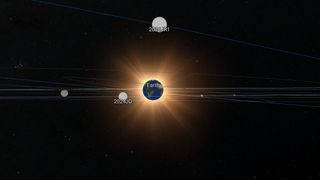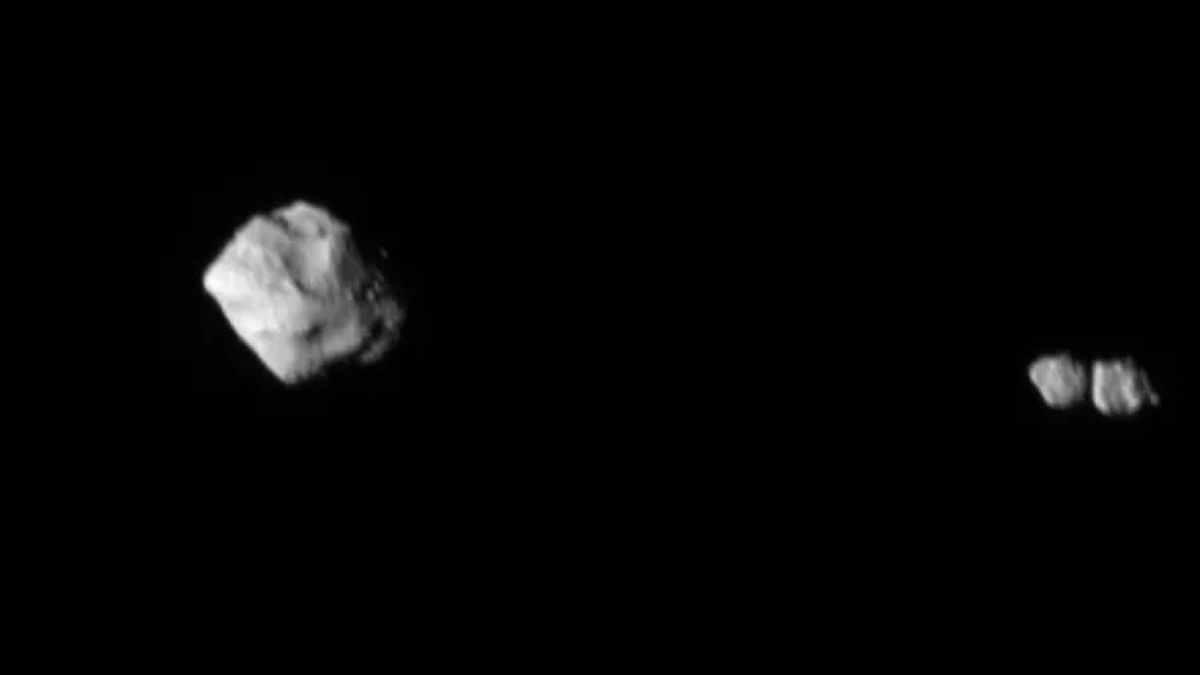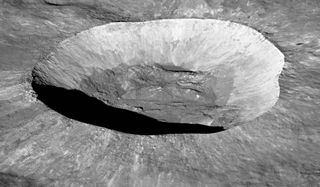The unusual shapes of the tiny asteroids Dimorphos and Selam have perplexed astronomers for years, but a new study finally explains how they got so strange. It also suggests these bizarrely shaped “moonlets” may be more common than scientists thought. Binary asteroids — pairs of asteroids that are essentially mini versions of the Earth-moon system — are pretty common in our cosmic neighborhood. These include the Didymos-Dimorphos duo that headlined NASA’s 2022 Double Asteroid Redirection Test (DART) mission. Previous research suggests that such binary asteroids form when a rubble-pile “parent”…
Read MoreTag: Asteroids
Jumping on an asteroid: How VR is being used to visit worlds we can never reach
I’m standing so close to JAXA’s Hayabusa2 asteroid lander that I could reach out and touch it. Instead, I jump on top of it. Then I strike a pose. When I leap off, I float for a moment in the low gravity before touching down gently on the surface of Ryugu, a craggy, gray world devoid of life and color. The “I” in this situation is my avatar, a digital approximation of myself that has a more consistent beard length and isn’t constantly rubbing sleep from its eyes. The Hayabusa2…
Read MoreNASA’s Planetary Radar Tracks Two Large Asteroid Close Approaches
The Goldstone Solar System Radar, part of NASA’s Deep Space Network, made these observations of the recently discovered 500-foot-wide (150-meter-wide) asteroid 2024 MK, which made its closest approach — within about 184,000 miles (295,000 kilometers) of Earth — on June 29. NASA/JPL-Caltech The Deep Space Network’s Goldstone planetary radar had a busy few days observing asteroids 2024 MK and 2011 UL21 as they safely passed Earth. Scientists at NASA’s Jet Propulsion Laboratory in Southern California recently tracked two asteroids as they flew by our planet. One turned out to have…
Read MoreNASA Asteroid Experts Create Hypothetical Impact Scenario for Exercise
5 min read Preparations for Next Moonwalk Simulations Underway (and Underwater) This artist’s concept depicts an asteroid drifting through space. Many such objects frequently pass Earth. To help prepare for the discovery of one with a chance of impacting our planet, NASA leads regular exercises to figure out how the international community could respond to such a threat. NASA/JPL-Caltech The fifth Planetary Defense Interagency Tabletop Exercise focused on an asteroid impact scenario designed by NASA JPL’s Center for Near Earth Object Studies. A large asteroid impacting Earth is highly unlikely…
Read MoreIt’s International Asteroid Day, and astronomers have much to celebrate
Today, astronomers and space lovers around the world are collectively marveling at our mercurial presence in the universe, particularly as we drift the cosmos amid large asteroids like the one that wiped out the dinosaurs 66 million years ago. June 30 marks Asteroid Day, a holiday observed annually to reflect on the prospect of a planet-destroying space rock striking Earth and what scientists are doing to mitigate that risk. The day is observed on the anniversary of the 1908 Tunguska event in Russia, when a space rock about half the…
Read MoreWhen a dangerous asteroid threatens Earth, humanity will have to work together, NASA says
A threatening asteroid could bring Earth’s oft-squabbling nations together, at least for a while. Dealing with a big, dangerous asteroid that appears to have our planet in its crosshairs will require a healthy dose of international cooperation, experts say — and it’s best to start thinking about that scenario now, while we have enough time to lay out a potential response framework. The United Nations (UN) has developed “procedures for responding to tsunamis and other big events,” Leviticus “L.A.” Lewis, the U.S. Federal Emergency Management Agency (FEMA) detailee to NASA’s Planetary…
Read MoreWatch 2 bus-size asteroids make close flybys of Earth this week (video)
Two bus-sized asteroids will zip past Earth closely but safely this week, starting with a 7-meter-long (22-feet) space rock named 2024 JF that’s expected to pass by on Monday (May 6) evening. Astronomers expect 2024 JF to make its closest approach at 8:04 p.m. ET tonight (1204 GMT on Tuesday). It will be followed by the 10-meter-long (32-feet) asteroid named 2024 JR1, which is expected to make its closest approach on Tuesday (May 7). You can watch both encounters live starting on Monday at 3:30 p.m. ET (0730 GMT), courtesy…
Read MoreCurious asteroid Selam, spotted by NASA’s Lucy spacecraft, is a cosmic toddler
When NASA’s Lucy mission passed by the near-Earth asteroid Dinkinesh last November, it discovered that Dinkinesh had a companion — a little moonlet that astronomers soon named Selam. And now, scientists have measured Selam’s age. Their estimate suggests that tiny Selam separated from its larger partner Dinkinesh just 2 to 3 million years ago, making Selam a toddler — by solar system standards, of course. “Finding the ages of asteroids is important to understanding them, and this one is remarkably young when compared to the age of the solar system,…
Read MoreEarth’s weird ‘quasi-moon’ Kamo’oalewa is a fragment blasted out of big moon crater
Earth’s “quasi-moon” was likely blasted away from the actual moon relatively recently in the solar system’s history, a new study suggests. Kamo’oalewa, a 131- to 328-foot-wide (40 to 100 meters) near-Earth object (NEO), was liberated by an asteroid impact between 1 million and 10 million years ago, a smashup that created the moon‘s 13.7-mile-wide (22 kilometers) Giordano Bruno crater, according to the research. Kamo’oalewa, or “469219 Kamoʻoalewa” as it is officially designated, was discovered in 2016 by the Pan-STARRS 1 asteroid survey telescope on Haleakalā, Hawaii, as part of NASA’s…
Read MoreIconic British meteorite ‘Winchcombe’ found to have a smashing past
The Winchcombe meteorite, which fell to the ground in Gloucestershire in the U.K. after blazing a trail through the night sky on Feb. 28, 2021, came from an asteroid that had been heavily altered by water as well as smashed apart and reformed multiple times. That’s the conclusion of a detailed analysis of the meteorite, fragments of which were found scattered in fields near the village of Winchcombe, and even on one family’s driveway. It was the first meteorite fall in the U.K. to be retrieved since 1991. Thanks to…
Read More